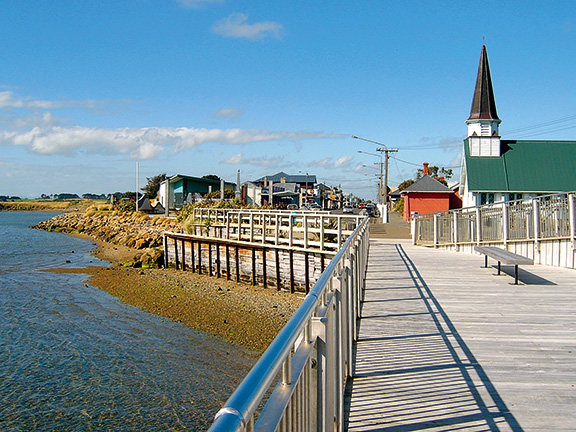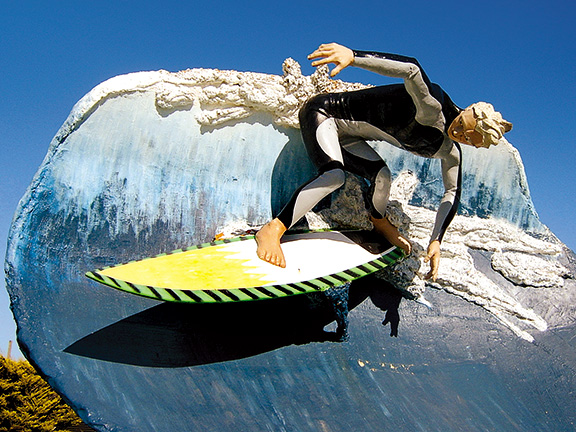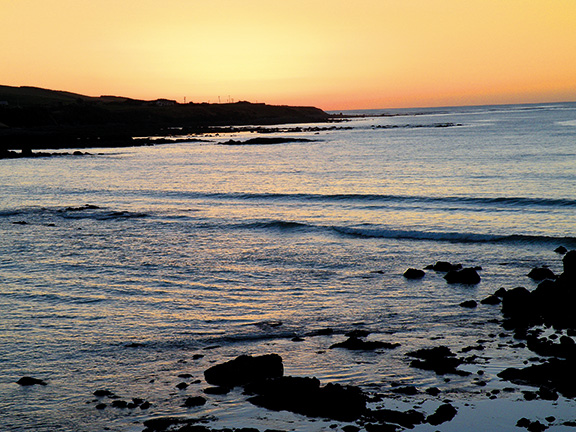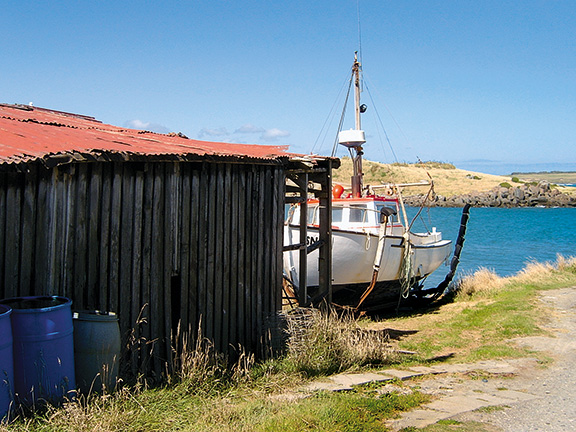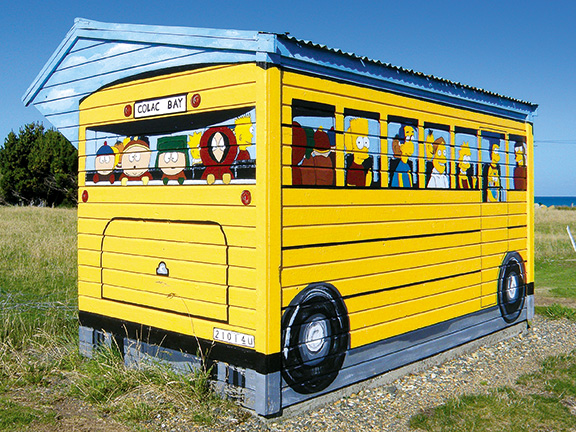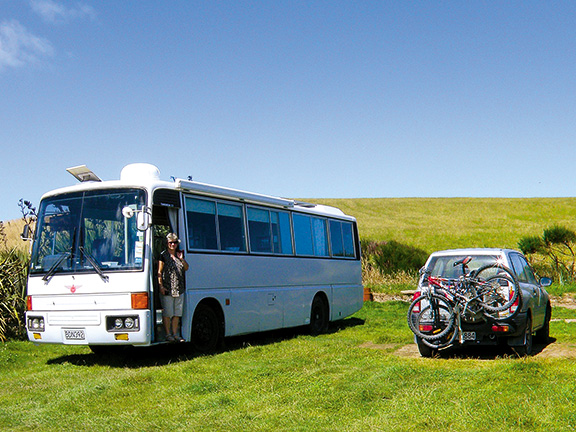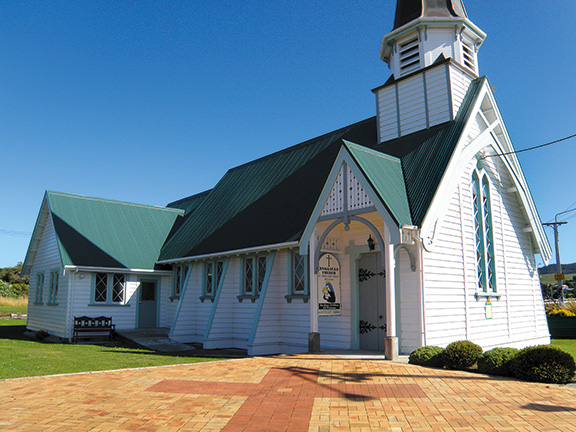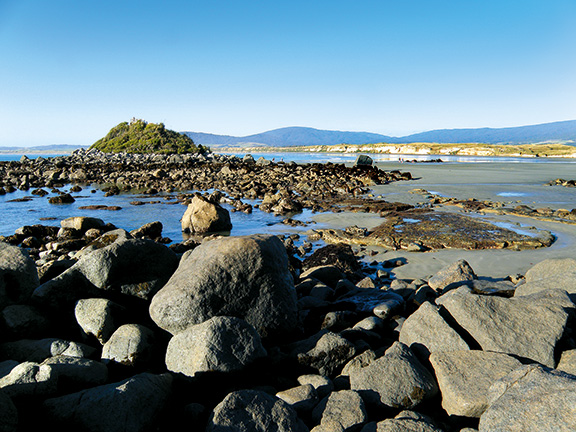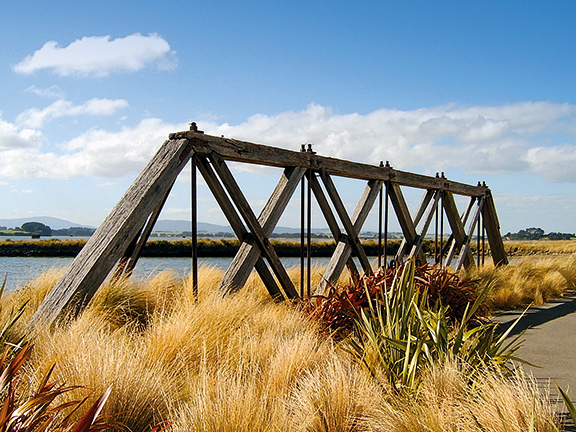Riverton is known as 'Southland's Riviera' and, while the area couldn't truthfully be called subtropical, visiting on a sunny summer's day we get the idea. Arriving on the Southern Scenic Route — State Highway 99 — visitors drive along Riverton's historic main street before crossing the narrow one-way bridge, with views of Jacobs River Estuary to the right, and picturesque fishing boats clinging to wooden jetties on the left.
Riverton was known as Jacob's River when it was first settled in 1836 and is the oldest permanent European settlement in Southland. Nowadays Riverton is also known as Aparima, the name Maori used for their pa and river.
The first settler in the area was Captain John Howell, who established a whaling station and eventually married a high-ranking Maori woman, Kohikohi, the daughter of Horomona Patu, of Centre Island, who brought with her a large area of land between the Waimatuku Stream and Jacobs River. This was soon to become a bustling port crowded with whaling, sealing, and immigrant ships.
An early government official described it as 'one of the loveliest spots in New Zealand' and, as we strolled around, we had to agree.
There are still many wonderful old buildings dating back to Riverton's Victorian heyday, now mostly housing cafes and art galleries. Along the waterfront, opposite Riverton's Anglican Church, there is a pleasant area to explore, which includes a large viewing platform, sculpture, and native planting leading to the town's museum: Te Hikoi Southern Journey.
There is a campground at Riverton and another at nearby Colac Bay, but we freedom camped at Monkey Island. This popular spot is just off the main road, south of Orepuki and is a beautiful sandy bay with a rocky area at the headland, including the small mound that is Monkey Island.
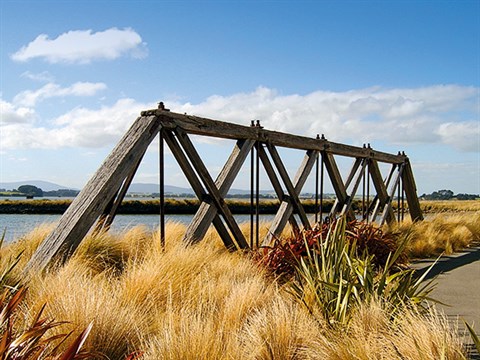
In the 1860s, before the road was built from Riverton, a slipway was built so boats could unload supplies for the little township on the shore. A 'monkey winch' was used to haul boats ashore and this gave its name to the island.
Maori know the island as Te Puka o Takitimu, the anchor-stone of the Takitimu waka, which legends say was wrecked in Te Waewae Bay. Monkey Island can be reached at low tide and the view along the sweep of Te Waewae Bay is magnificent. The sunsets were stunning too.
We used our car to explore the metal roads between State Highway 99 and the Foveaux Strait. Tucked in behind Pahia Point are Cosy Nook and Garden Bay, picturesque coves with quirky little fishermen's cribs and boat-houses. Cosy Nook was named by the first settler, Captain George Thompson, after his home village of Cozy Nuek in the Scottish Borders and the craggy bays are reminiscent of Scotland.
Further east is the famous surf beach, Colac Bay/Oraka. You can't miss it — there is a giant sculpture of a surfie beside the pub and campground. Here you will also find a cafe, restaurant, and craft shop together with some very quirkily-painted school bus shelters.
From Riverton you can enjoy a scenic drive past the beaches of Riverton Rocks to Howell's Point, where there are views to Stewart Island/Rakiura, Bluff, and Invercargill. Howell's point is a popular spot for walking, bird watching, and picnicking — although picnickers beware: it is invariably windy at the viewpoint.
Local knowledge
- There is a loop walk through Te Wai Koraki wetland reserve, an area of six acres that provides sanctuary for whitebait and other native fish.
- Dolphins are frequently spotted in the Jacobs River Estuary.
- Upriver from the estuary is Aparima River, known as Southland's whitebait river.
- Southland's best-known race meeting, the two-day Easter Carnival, is held at Riverton's race course. Camping is allowed here for NZMCA members.
- The Big Paua Shell at the entrance to the town is a Riverton icon. There is a souvenir factory shop beside it.
Check out part one in Heather Whelan's Southland sojourn — camping along the Otago rail trail. Subscribe to Motorhomes, Caravans & Destinations magazine here.

